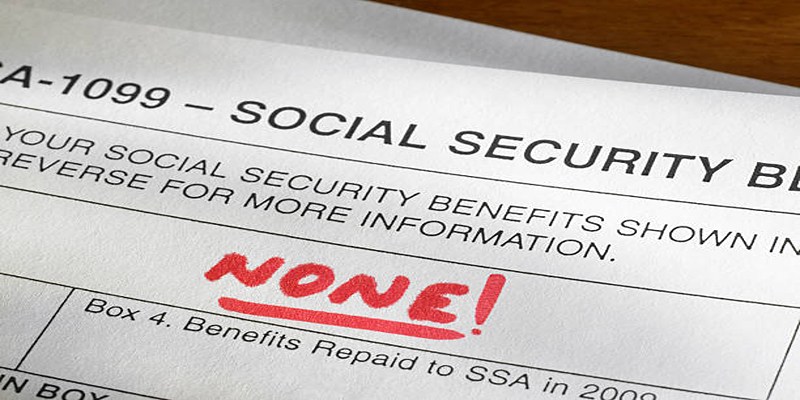Navigating the labyrinth of tax forms can be daunting, especially when it comes to reporting non-employment income. For many freelancers, contractors, and small business owners, Form 1099 is a critical piece of the puzzle. Understanding how to properly manage this form can save you headaches, time, and potential penalties. In this comprehensive guide, we'll demystify Form 1099, providing clear, actionable insights to help you confidently report your non-employment earnings. Whether you're a seasoned freelancer or new to the world of self-employment, this post is for you.
What is Form 1099?

Form 1099 is an IRS tax form used to report various types of income other than wages, salaries, and tips. Essentially, it serves as a record that an entity or personother than your employerpaid you money. Every taxpayer who received income from sources other than employment must file a Form 1099. This includes freelancers, independent contractors, and even landlords. Each type of income has its own specific 1099 form, such as 1099-MISC or 1099-NEC. Understanding the right form to use and how to file it correctly is crucial for staying compliant with tax laws and avoiding potential penalties.
Types of Form 1099
There are several varieties of Form 1099, each designed to report different types of non-employment income. The most commonly encountered forms include:
1099-NEC
Form 1099-NEC (Nonemployee Compensation) is utilized to report payments of $600 or more made to non-employees for services rendered throughout the year. This form is especially pertinent for freelancers and contractors.
1099-MISC
This form covers a wider range of miscellaneous income, such as rent, royalties, and other earnings not covered by Form 1099-NEC. It was previously used to report nonemployee compensation but now focuses on other types of miscellaneous earnings.
1099-DIV
Form 1099-DIV is used to report dividends and distributions from investments. If you receive income from stocks or mutual funds, you'll likely receive this form.
Each form has distinct requirements and deadlines, so it's important to know which one(s) apply to your situation.
Who Needs to File Form 1099?
If you run a business or work as an independent contractor, chances are youll need to file one or more types of Form 1099. Generally, if you pay an independent contractor $600 or more in a single year, you must issue a Form 1099-NEC to them. This rule applies regardless of whether you're a sole proprietor, partnership, corporation, or even a nonprofit organization. The key is that you've made payments in the course of your trade or business. Failure to file these forms can result in significant penalties, so it's critical to determine your obligations and meet all filing deadlines.
Deadline for Filing Form 1099
The deadline for filing Form 1099 with the IRS generally falls on January 31st. This date applies both to sending copies to the recipient and submitting your forms to the IRS. In some cases, you may receive an extension, but it's always best to plan ahead and ensure timely compliance. Missing the deadline can result in penalties ranging from $50 to $270 per form, depending on how late the filing is.
How to File Form 1099?

Filing Form 1099 involves several steps, from gathering information to submitting the completed form. Heres a step-by-step guide:
Gather Necessary Information
Before you can file, you'll need the recipient's name, address, and taxpayer identification number (TIN). This information is typically obtained using a W-9 form.
Complete the Form
Fill out the appropriate Form 1099, providing accurate and complete information. Double-check all entries to ensure there are no errors that could delay processing.
Submit to the IRS
Once completed, submit your Form 1099 to the IRS. This can be done electronically or by mail, though e-filing is generally faster and more secure.
Provide Copies to Recipients
In addition to filing with the IRS, you must send a copy of the Form 1099 to each recipient by January 31st. This ensures they have the necessary information for their own tax filings.
Common Mistakes to Avoid
When it comes to filing Form 1099, even small errors can lead to big problems. Here are some common mistakes to watch out for:
- Incorrect Information: Ensure all information, including names, addresses, and TINs, is correct. Errors can lead to processing delays and penalties.
- Missing Deadlines: Missing filing deadlines can result in hefty fines, so it's crucial to stay organized and plan ahead.
- Failing to Submit Copies to Recipients: Dont forget to send copies of Form 1099 to the recipients. They need this information to accurately report their own earnings.
Electronic Filing vs. Paper Filing
While both methods are acceptable, electronic filing offers several advantages:
Speed and Efficiency: E-filing is faster, reducing processing times and minimizing the risk of delays.
Reduced Errors: Electronic systems often include checks to catch common errors, ensuring more accurate submissions.
Confirmation of Receipt: When you file electronically, you receive immediate confirmation that your forms have been received by the IRS.
Record Keeping and Documentation
Maintaining thorough records is essential for tax compliance. Keep copies of all Forms 1099 filed, along with any supporting documentation. Good record-keeping practices help you stay organized and prepared in case of an audit. It also provides a clear trail in case you need to reference past filings.
Impact of Form 1099 on Your Taxes
Receiving a Form 1099 means that the income reported on it is taxable. Be sure to include this income on your tax return to stay compliant. Keep in mind that failing to report 1099 income can lead to penalties and interest charges. Its always best to be thorough and accurate in your reporting.
Resources for Help
Navigating tax forms can be challenging, but youre not alone. There are numerous resources available to help you understand and file Form 1099:
- IRS Website: The IRS website offers detailed instructions and resources for filing Form 1099.
- Tax Professionals: Consider consulting with a tax professional to ensure youre meeting all filing requirements and optimizing your tax strategy.
- Software Solutions: Many tax preparation software programs include features to assist with filing Form 1099. These tools can simplify the process and reduce the risk of errors.
Conclusion
Understanding and properly filing Form 1099 is essential for anyone receiving or paying non-employment income. By following the steps outlined in this guide, you can ensure compliance and avoid costly penalties. Remember, accurate and timely filing not only keeps you on the right side of the IRS but also helps you manage your finances effectively. If youre still unsure about any part of the process, dont hesitate to seek professional advice. For more information and additional resources, visit the IRS website or consult a tax professional. Start mastering your Form 1099 today and take control of your financial future.







